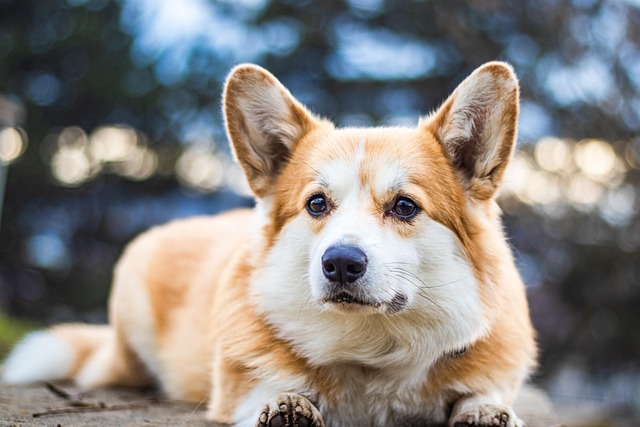
How to test for tetanus in dogs?
Tetanus in dogs often starts with subtle signs most owners miss—like a stiff jaw when grabbing a favorite chew toy or hesitation to climb stairs they once bounded up.
There’s a certain panic that creeps in when you notice your dog panting harder than usual, tongue lolling, eyes unfocused—especially on a hot day. I’ve been there, and honestly, it never gets easier to watch a dog struggle with heat exhaustion. Dog heat exhaustion recovery is not just a matter of tossing a pup into the shade and hoping for the best. The process is nuanced, and immediate care can truly make the difference between a scare and a tragedy.
Heat exhaustion in dogs is more than just “being too hot.” It’s a dangerous state where a dog’s body overheats, usually from being exposed to high temperatures or excessive activity in warm weather. Dogs don’t sweat like humans do; their primary way of cooling off is by panting, and sometimes that’s simply not enough. When a dog’s internal temperature rises above normal—usually anything beyond 103°F—it starts to show signs that can escalate frighteningly fast. You might spot heavy, noisy panting, drooling, bright red gums, or even vomiting. More subtle signs sneak in, too: uncoordinated movements, weakness, or a glazed look in their eyes. If this state progresses to heat stroke, organs can start to fail. That’s why immediate, calm intervention is so critical.
You might be wondering what to watch for in those early moments. Sometimes, it’s obvious—a dog collapsed after a run in the summer sun. Other times, the signs are sneaky. Maybe your dog seems more lethargic than usual or refuses to get up after a walk. Rapid breathing, a racing pulse you can feel in their chest, or even confusion can be early warnings. If you notice your dog seeking out cool tile floors or digging at the ground in the shade, don’t ignore it; that’s canine wisdom at work, trying to self-soothe. And if your dog’s skin feels hot to the touch, that’s a red flag worth acting on.
So, what do you do in the first frantic moments of realizing your dog is overheating? First, move your dog to a cooler environment right away—shade, indoors, wherever the temperature drops. Don’t pour ice-cold water on them! Instead, use cool (not cold) water to dampen their fur, especially on the belly, paws, and armpits. I like to keep a spray bottle handy for moments like this, but a soaked towel works wonders, too. Let your dog drink small amounts of cool water—never force it, and don’t let them gulp too much at once. If you have a fan, set it up so the airflow helps with evaporation. While you’re doing this, keep calm; your dog takes emotional cues from you. Panicking only makes things worse for both of you. Frankly, these measures are about stabilizing your dog while you assess how serious things are and whether you need to dash to the vet.
Now, let’s talk about natural remedies for dog heat exhaustion and how to help a dog recover from heat exhaustion at home. Hydration is your best friend here, but it’s not just about water. Sometimes, a little low-sodium chicken broth (cooled, of course) can entice a reluctant drinker. You can even freeze broth or water into ice cubes for your dog to lick—this slows down their intake and provides gentle cooling. I’ve found that gentle damp cloths placed on the pads of their feet and inner thighs can help lower body temperature safely. Avoid using alcohol or ice packs directly; those methods can actually constrict blood vessels and trap heat. After the acute phase, ensure your dog rests in a quiet, cool area. Resist the urge to return to normal walks or play too soon—full recovery takes time, and rest is non-negotiable. Home care tips for canine heat exhaustion should always be paired with careful observation. If your dog seems out of sorts in any way, don’t brush it off.
However, there are moments when home care just isn’t enough. If your dog’s symptoms don’t start to improve within a few minutes, or if they begin to vomit, have diarrhea, collapse, or seem disoriented, it’s time to get professional help. Any sign of trouble breathing, seizures, or a body temperature that stays high should send you straight to the vet, no hesitation. Even after apparent recovery, a checkup is wise—sometimes, organ damage doesn’t show up right away, and only a veterinarian can do the necessary blood work to rule out complications.
Of course, the best scenario is never needing to use any of this advice. Preventing heat exhaustion in dogs boils down to a handful of habits. Walk your dog early in the morning or later in the evening when the sun is less intense. Always have fresh water and shade available. I can’t count the number of times I’ve seen dogs left in cars or on hot pavement—please, just don’t. Short-nosed breeds, puppies, seniors, and dogs with medical issues are especially vulnerable. If you’re not sure whether it’s too hot for your dog, try the back-of-the-hand test on the pavement: if it’s too hot for you, it’s much too hot for them. And if you ever have doubts, err on the side of caution. Our dogs trust us to keep them safe, and honestly, they’re worth every ounce of effort it takes.

Tetanus in dogs often starts with subtle signs most owners miss—like a stiff jaw when grabbing a favorite chew toy or hesitation to climb stairs they once bounded up.

If you’re a new dog parent in the US—maybe you’re standing in your Ohio apartment’s pet store aisle, holding a bag labeled “senior dog food” while your 8-year-old Dachshund

If you’re a new dog parent to a senior pup in the US—maybe you’re standing in your Florida apartment’s pet food aisle

Pet owners often worry about hidden health risks for their dogs, and toxoplasmosis is one that flies under the radar for many—understanding how dogs pick it up is key to keeping them safe.

If you’re a new dog parent in the US—maybe you’re standing in your Chicago apartment, staring at your 7-month-old Poodle mix, Bella

Tetanus in dogs comes from bacteria entering open wounds—think a deep cut from a rusty fence nail during a walk, or a scraped paw from digging in contaminated soil.